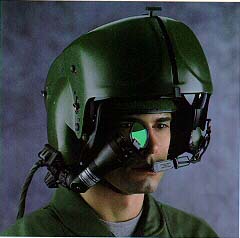By Alan
Certainly one of the more interesting technological advances showing up in the consumer environment is the concept of Augmented Reality (or AR):The concept of supplementing a view on the world with additional data via an overlay or heads up display. Ever since television came up with the idea of an overlay with a teleprompter or popup videos, the general public can get the idea of what this means.
What does it look like? Well if we see what Arnold Schwarzenegger was supposed to have seen in the movie Terminator, it was a simple white text and line drawings around the real world. Not just status messages, but actual outlines, three dimensional extrapolation, etc.
What makes this augmented reality? Augmented means that the computer is contributing to, but not replacing the real world. Augmentation can be images, sound, or other possible senses.
It can be argued that we've had augmented reality for many decades. Heads-up displays in fighter jets have shown information about the targets, showing the pilot status information about the plane in order to minimize the need for the pilot to look away from the target. However, that display was essentially tied in with the aircraft. If the pilot didn't look at the target, or didn't keep their head lined up, the display wouldn't work.
 However, early helmet mounted displays (usually mounted in helicopter pilot helmets) with an ocular reflector.
However, early helmet mounted displays (usually mounted in helicopter pilot helmets) with an ocular reflector.
These helmets cost huge money, thousands or millions of dollars apiece. When displays are that expensive, then they will only get used for the most important of tasks, like defense.
It was quite bulky, but it meant the picture would adjust as the helmet was moved. Much closer to the ultimate augmentation, full speed computer overlays.
So, what happens when the price of technology drops by a thousand-fold? When digital cameras in cell phones have the ability to display live images of the real world, track the motion, position, and angle of the camera then the technology has matured enough to have hand held windows into a reality that is better than normal.
iPhone applications are cropping up all over the place with the label of Augmented Reality. Currently, they use GPS locations, tilt and acceleration sensors and typically are augmenting geographic data. Buildings, natural features, streets, landmarks. Everything that remains fixed in location.

But, consider that in the future pattern recognition could provide augmented reality updates for plant identification or animal species.
Who knows what this is going to do to society?
Objects could be quickly identified. The only mysterious objects would only be mysterious the first time they were encountered. Forever afterwards, the AR would tell exactly what the object was. Not just to the person who discovered it, but for everyone else who looked at it.
What if the AR systems have the capability to recognize people? You point your phone at a person, and you know who they are, their Facebook statuses, their education, their credit rating, their criminal record, perhaps their political leanings. No secrets. No mysteries. Instant information. ReadWriteWeb has an interesting article about this twist on AR.
We'll never be the same after using this technology.
 MAD21
MAD21